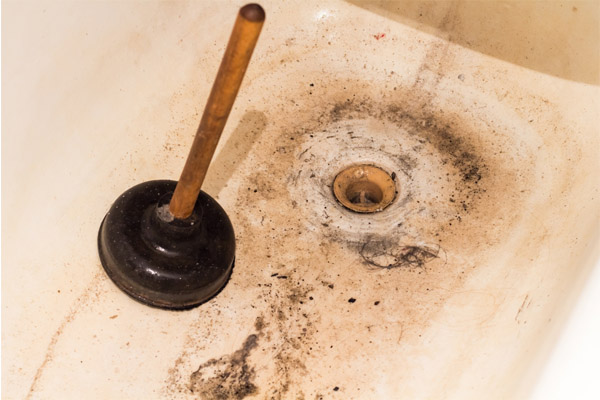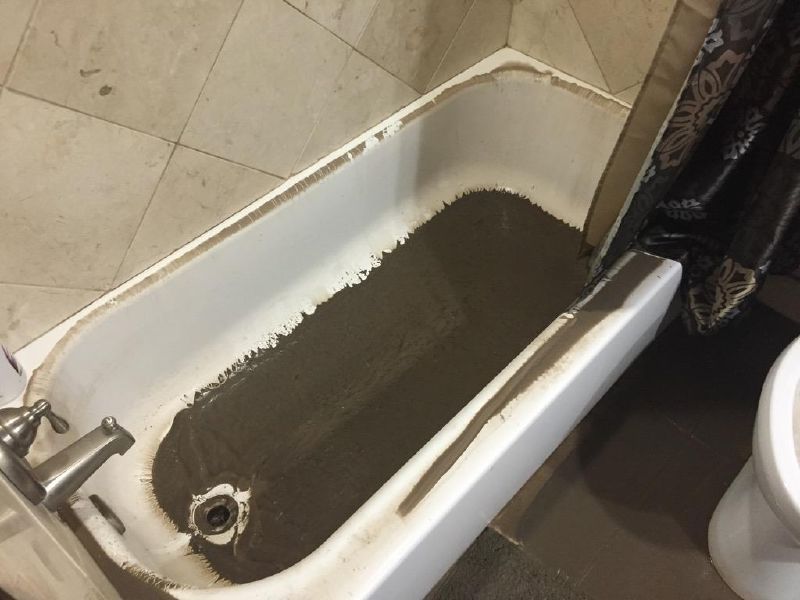Recommended Reasons for Waste Coming Up in the Bathtub
Recommended Reasons for Waste Coming Up in the Bathtub
Blog Article
Do you find yourself trying to locate information and facts concerning Why is There Sewage Coming Up Through the Bathtub?

Sewage backup in the bathtub can be a distressing and unsanitary problem for any homeowner. Not just is it troublesome, however it likewise presents major health threats and indicates underlying problems with the plumbing system. Understanding why sewer is coming up with the tub is critical for taking suitable activity to address the issue successfully.
Intro to the Problem
Usual Reasons for Sewage Back-up
Obstructions in the Sewer Line
Among the most common root causes of sewage back-up is a clog in the sewage system line. This can occur due to the buildup of particles, grease, or international things in the pipelines, preventing correct circulation and creating sewer to support right into your tub.
Tree Origin Intrusion
Tree roots seeking wetness and nutrients can infiltrate drain lines via little cracks or joints. Gradually, these roots can expand and increase, triggering significant damages to the pipes and bring about sewage back-up issues.
Understanding the Problem
When sewage starts backing up right into the bath tub, it's a clear sign of a problem with the drainage system. The wastewater that needs to be flowing far from your home is instead finding its way back into your space, which can cause significant damage and health hazards.
Prospective Causes
Several variables can add to sewer backup in the bath tub. From clogs in the sewer line to issues with the plumbing facilities, recognizing the source is vital for finding an option.
Aging Infrastructure
Older homes might have dated plumbing systems that are much more susceptible to deterioration, cracks, and deterioration. As pipes age, they end up being more vulnerable to leakages and clogs, increasing the chance of sewer back-up incidents.
Heavy Rainfall or Flooding
During periods of heavy rainfall or flooding, the drain system might become overloaded with excess water, causing back-ups and overflows. This can lead to sewer backing up right into bathtubs and other fixtures inside the home.
Indicators of Sewage Backup
Foul Odors
Undesirable smells emanating from drains pipes or fixtures, especially in the restroom, may indicate sewage backup issues. These smells are often solid and relentless, signifying a trouble that needs prompt attention.
Slow Draining Fixtures
Tubs, sinks, and toilets that drain pipes slowly or otherwise whatsoever could be experiencing sewage back-up. If multiple components are affected at the same time, it's most likely that the concern originates from an usual factor, such as the main sewage system line.
Gurgling Sounds
Strange gurgling or bubbling sounds coming from drains pipes when water is running elsewhere in your house are indicative of air caught in the plumbing system. This air build-up can arise from sewage back-up and need to be checked out promptly.
Health And Wellness Dangers Connected With Sewage Back-up
Contamination of Supply Of Water
Sewer backup can infect the water in your house, presenting a severe health danger to you and your family members. Exposure to contaminated water can bring about stomach issues, skin infections, and other ailments.
Mold Development
Dampness from sewer backup can produce perfect problems for mold and mildew development in your house. Mold spores can exacerbate respiratory troubles and cause allergies in sensitive people, making punctual cleanup essential.
Spread of Illness
Sewer contains unsafe germs, infections, and parasites that can cause a series of diseases, including liver disease, cholera, and gastroenteritis. Entering contact with sewage or polluted surface areas puts you at risk of infection.
Cleaning Up After Sewer Back-up
Sanitation Procedures
Completely decontaminate and disinfect impacted areas after sewage back-up to get rid of dangerous bacteria and stop mold and mildew growth. Use suitable cleaning items and protective gear to guarantee secure and efficient clean-up.
Restoration of Affected Locations
Fix any kind of damage to floor covering, wall surfaces, or fixtures triggered by sewer back-up. Relying on the extent of the damage, you may need to change carpeting, drywall, or various other products to recover your home to its pre-loss problem.
Immediate Actions to Take
Turning Off Water
In the event of sewage backup, it's vital to switch off the water to stop more contamination and damage. Situate the main water shutoff valve in your home and closed it off till the issue can be resolved.
Contacting a Professional Plumber
Dealing with sewage back-up is not a do it yourself job. Call a qualified plumber with experience in taking care of sewage-related concerns to examine the circumstance and carry out essential repair work or cleanings.
Staying Clear Of Contact with Contaminated Water
Until the sewer back-up is fixed, stay clear of contact with infected water to avoid the spread of germs and microorganisms. Wear protective equipment if you need to be in the damaged location and clean your hands completely afterward.
Safety nets
Regular Maintenance of Sewer Lines
Schedule normal inspections and upkeep of your sewage system lines to determine and attend to prospective problems prior to they rise right into significant problems. This can consist of clearing out particles, inspecting for tree origin invasion, and fixing any type of damaged pipes.
Mounting Backwater Shutoffs
Take into consideration setting up bayou valves in your plumbing system to stop sewage from receding into your home during periods of heavy rainfall or flooding. These valves automatically close when water starts backing up, protecting your building from contamination.
Proper Disposal of Home Waste
Stay clear of flushing anything aside from bathroom tissue and human waste down the commode to stop blockages and obstructions in the sewer line. Dispose of oil, oil, and various other household chemicals correctly to reduce the risk of plumbing troubles.
Why Is Water Backing Up in My Bathtub When I Flush My Toilet?
What to do about a sewer line clog
First, don’t bother with plunging. No amount of plunging will dislodge the clog in a sewer line. The clog is too far away. Plungers are for clogs in the toilet itself, not the sewer line. Plus, the most likely causes of a sewer clog are:
Tree roots Flushed toys or feminine products Grease buildup Those items don’t move easily. And in the case of tree roots, the roots need to be cut out of the pipe and the pipe will need to be repaired.
You’ll need a closet auger. A closet auger is a type of plumber’s snake with a protective cover to keep from scratching the delicate porcelain toilet. If the clog is further down, you may need to remove the toilet or use one of your cleanouts to get to the clog.
We also recommend doing a video inspection of the drain to ensure that the cause of the clog has been completely removed. Otherwise, you could have the same problem again in a few days or weeks.
https://mspplumbingheatingair.com/blog/why-is-water-backing-up-in-my-bathtub-when-i-flush-my-toilet

Hopefully you liked our section about . Thank you for taking the time to read our posting. Do you know somebody else who is involved in Water Coming up Bathtub Drain? Take a moment to share it. I recognize the value of your readership.
View More
Report this page